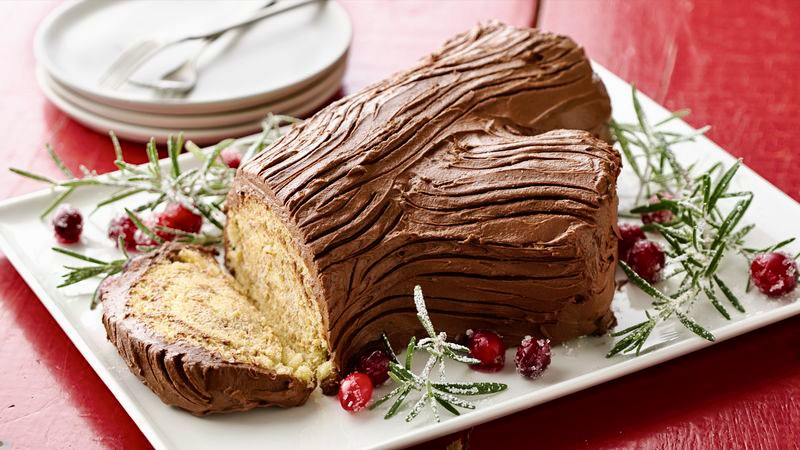Holiday traditions can be preserved through sharing
Last month, I spent a lovely time with the residents at The Moorings talking about holiday traditions around the world, with a specific focus on how various cultures incorporate food into their celebrations. Of course, I didn’t visit every country on the globe, but included a sampling from various places, starting with this country, where children hang stockings on the mantel and leave cookies for Santa along with carrots for his reindeer.
The department-store style of Santa Claus we know today is based on the legends surrounding a third-century Turkish monk named Saint Nicholas. He was reputed to have tossed gold coins down the chimney, where they fell into stockings hung up to dry. This tale was combined with the hero of Clement Moore’s poem, “A Visit from St. Nicholas,” aka “Twas the Night Before Christmas,” and then merged with Thomas Nast’s 1880s cartoon drawing that eventually became the basis for Coca-Cola’s 1930s ad campaign, a Santa who still appears during commercial breaks in Hallmark holiday movies.
Looking at Italian traditions, you’ll see the Roman Catholic custom of abstinence from meat on the eve of a religious holiday, along with an attachment to the number seven: sacraments, days of Creation, virtues and deadly sins. Hence, the Feast of the Seven Fishes is prepared on Christmas Eve. Typical fish dishes would include salt cod, eel, shellfish (conch, scallops, clams), calamari, and anchovy – all served with ample side dishes.
In Venezuela, the family returns home from midnight mass to share a meal that is centered around hallacas. These are made from a thin layer of corn dough, stuffed with a mixture of beef, pork, chicken, onion, bell pepper, raisins and olives. The dough is folded into a packet around the filling, wrapped in plantain leaves, tied with string and boiled. Like so many revered holiday foods, this is also one that requires a great deal of time and attention to prepare in advance.
“I will visit you for my Christmas rice” is a saying you will hear in the West African countries of Nigeria, Gambia, Ghana and Senegal. This refers to their tradition of offering guests jollof rice, a combination of long-grain rice, tomatoes, onions, spices and (sometimes) meat. This slow-simmered dish is believed to be the ancestor of the longtime Louisiana favorite jambalaya. Some recipes include chicken and extra vegetables, but the flavorful, tender rice along with the crispy bits on the bottom of the pot are the stars of the dish.
Ethiopians will serve Doro Wat, a highly seasoned stew flavored with a fiery and colorful spice blend called berbere. This is a combination of more than a dozen spices, some of which must be toasted whole and then ground, to create both sweet hints and rich heat. The stew is eaten with injera, a spongy bread made of teff flour. Both parts of the meal take a long time to prepare, making the celebratory meal all the more special.
The one tradition that most surprised me was found in Japan. In 1970, Kentucky Fried Chicken opened its first store in Japan, where Christmas was not observed as a holiday. Some clever ad man started claiming that American families bring home party buckets of fried chicken for their Christmas dinners. Soon, KFC franchises placed statues of Col. Sanders dressed as Santa outside their doors, advertising “Kentucky for Christmas!” Their Christmas Eve sales figures are the best of the year.
The creative, elegant and very difficult-to-prepare dessert known as Buche de Noel is the highlight of the French Christmas Eve feast called réveillon. That name means “waking,” because participation typically requires staying awake until morning as revelers finish their lavish meals. As seen in the photo, the rolled and filled cake is decorated to resemble a log that has fallen in the forest. Despite my following all the advice on King Arthur’s Flour website, I was unable to keep my cake roll intact. If this happens to you, simply break the cake into pieces and use it to make a trifle for dessert.
Buche de Noel*
1/4 C milk
3 T butter
1/2 C sugar
5 eggs
1 t baking powder
3/4 C flour
4 egg whites
3/4 C sugar
2 T water
1/4 t cream of tartar
1 t vanilla
1 1/2 C softened butter
1 t vanilla
1 1/2 t espresso powder
1 t water
8 oz bittersweet chocolate
1/3 C boiling water
Preheat oven to 400 F. Line a rimmed baking sheet with parchment paper; set aside. Combine milk and butter in a small saucepan over low, stirring until the butter has melted; set aside. In a large bowl, beat together sugar and eggs until tripled in volume, about 7 minutes. Sift in flour and baking powder; stir to combine. Fold in butter mixture and stir to combine thoroughly. Spread batter evenly in prepared pan. Bake until golden, about 10 minutes. Run a knife around the edge of the pan and invert the cake onto a sheet of aluminum foil; allow to cool completely.
Whisk together egg whites, sugar, water and cream of tartar in a large stainless steel bowl set over a pot of simmering water. Continue to beat to create a glossy meringue, making sure not to allow the egg whites to cook. Remove bowl from heat and beat in vanilla; set aside. In another bowl, beat the butter until creamy, about 30 seconds. Add the meringue in large dollops, beating well after each addition. Divide the mixture in half, setting aside one half. Add vanilla to the other half; dissolve coffee powder in water and stir into mixture to make the filling then set aside. Dissolve chocolate in boiling water and stir into reserved half of meringue to make frosting; cover and store in the refrigerator. Spread the coffee-flavored buttercream evenly over the cake and use the foil to help tightly roll it into a log. Wrap in foil and place in the freezer for about 3 hours. When ready to frost, allow the chocolate buttercream to come to room temperature. Spread frosting evenly over cake roll; use the tines of a fork to create the illusion of tree bark. *Adapted from Joy of Cooking.
Jollof Rice*
14-oz can whole tomatoes
1 chopped red bell pepper
1 chopped red onion
4 peeled garlic cloves
1-inch piece peeled fresh ginger
1 red habanero chile, stemmed
2 T canola oil
1/2 C canola oil
2 sliced red onions
4 sliced garlic cloves
1 T tomato paste
1t turmeric
1/4 t smoked paprika
1 1/2 C basmati rice
2 C vegetable stock
3 thyme sprigs
1 bay leaf
Kosher salt and freshly ground black pepper
salt & pepper, to taste
Combine tomatoes and their juices with pepper, onion, garlic, ginger and chile in a the bowl of a food processor. Process a few seconds at a time to form a smooth purée; set aside. Heat the 2 T canola oil in a saucepan over medium. Add the purée and bring to a simmer. Reduce heat to medium low, cover and cook until the sauce is reduced, about 20 minutes; set aside. Heat the 1/2 C canola oil in a large Dutch oven over medium. Add onions and cook, stirring frequently, until softened, about 7 minutes. Remove half the onions to a plate; set aside. Add the garlic to the pan and sauté over low until fragrant, about 2 minutes. Add the tomato paste, turmeric and smoked paprika. Cook, stirring often, until turmeric is fragrant and tomato paste has deepened to a dark-red color, about 2 minutes. Pour in the tomato mixture and bring to a simmer. Add the rice, stock and herbs; cover and simmer over very low heat until rice is tender, about 20 to 25 minutes. Remove the bay leaf and thyme sprig; season to taste with salt and pepper. Add the reserved onions and fluff the rice with a fork, keeping in mind that some of the best bites are the crunchy bits on the bottom of the pan. Yield: 6 to 8 servings. *Adapted from New York Times.





















































